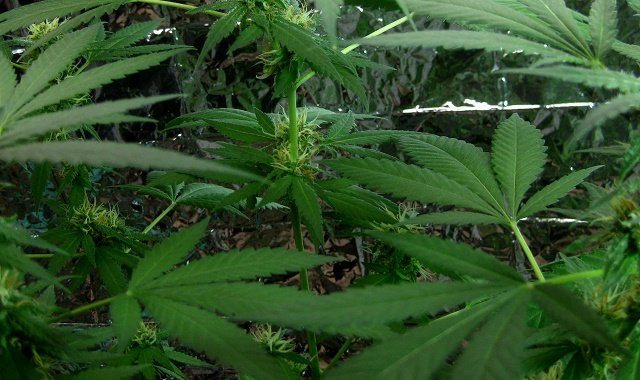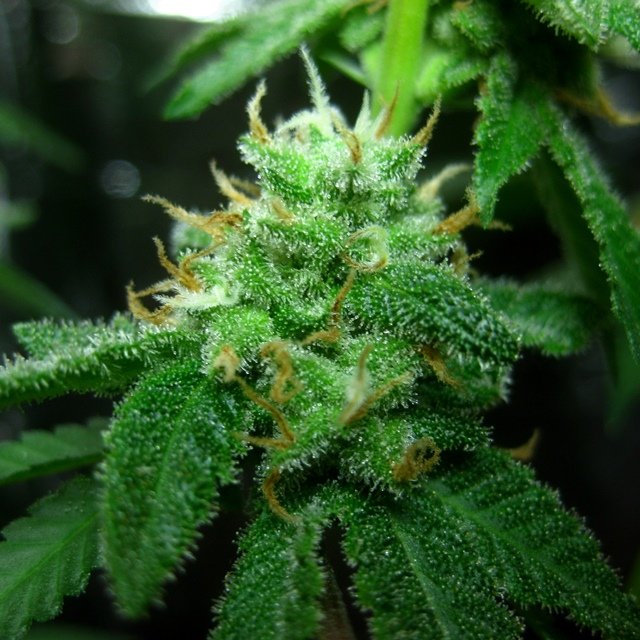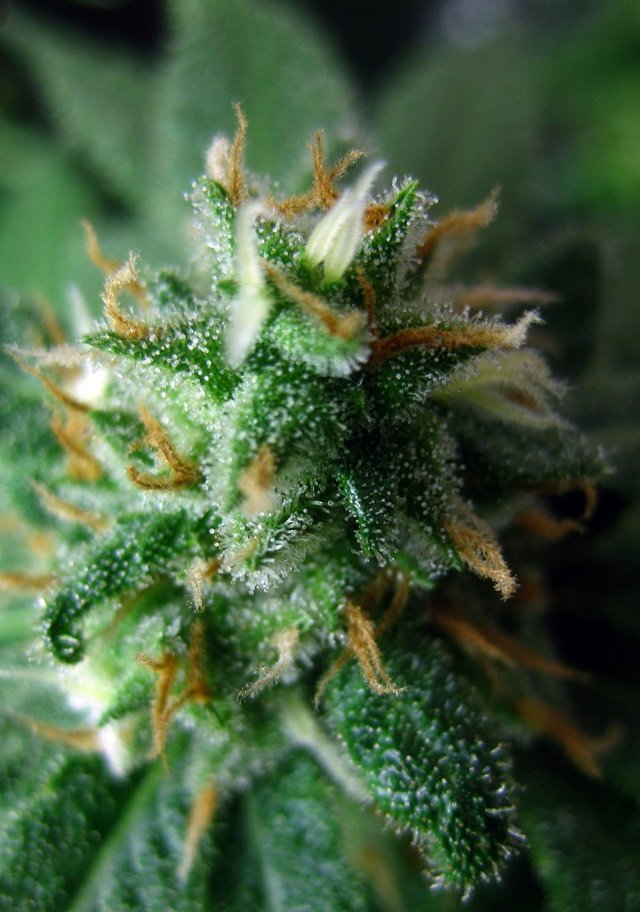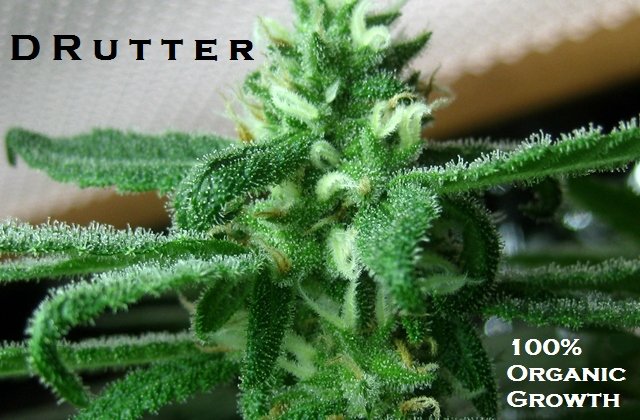how to prevent MOLD on your indoor (or greenhouse) cannabis plants
Below are the 6 things I DON'T do, to keep my indoor garden mold-free!
Various fungi, especially molds, are a common problem for many cannabis gardeners - indoor and out. Some affect the plant during the vegetative cycle, as root, stem, and leaf growth is building up the plant's size. Others target the flower buds, dense moist zones often ripe for fungal colonization. Some fungi (like the common powdery mildew) can affect cannabis at pretty much any stage.

Without getting deeply into the science of fungi (you can do that here), they absorb water and decaying plant matter, to form proteins to build their structures (to grow, reproduce, etc):
I don't recommend using any fungicides on your plants. If you have really moldy (or dead) leaves it's best to cut them off and discard them. If possible, get rid of any plant that shows any mold at all (although this loss can be hard for many indoor gardeners to bear).
To prevent mold from ever appearing on your plants in the first place...
DO NOT
- overwater
- overheat
- humidify or mist
- spray foliar treatments
- fertilize
- allow stagnant air
DO NOT overwater
The more often your soil is wet, the more often the air around your plants is extra damp, leading to opportunities for mold. Most cannabis growers overwater - even professionals with decades of experience! Generally, don't water your plant until it begins to look thirsty. Get good at spotting that before you water. The plant shouldn't look wilted, that's too thirsty! Another clue is the soil itself. If there's any moisture near the surface of the soil, you shouldn't water.
When you DO water, water slowly so that it can soak into the soil evenly without any spilling out the bottom. Only water until the majority of the soil is damp, ideally not running off any nutrients via overflow. It depends on conditions and strain of course, but many indoor plants don't need watering more than once every 8 days or longer!

DO NOT overheat
Many growers believe cannabis plants prefer hot, humid, jungly conditions. While some strains can grow like that, many prefer more moderate temperatures. Room temperature in most houses is fine. Some basement gardens may need to consider temperature, although generally speaking the light source is enough heat.
In many larger indoor gardens, large fan systems are needed to keep temperatures down. When the fans break down, mold becomes a huge potential threat to the crop. Heat helps breed mold. Without shocking your plants of course, always keep your temperatures down!
DO NOT humidify or mist
Again, cannabis plants don't usually prefer a jungle. Many indoor gardeners swear by humidifying the air, but I've more often just seem this leading to mold. Even young plants don't need to be misted, as so many people think they do! As long as the air isn't bone dry, and you're watering the soil properly, the stems and leaves don't need watering directly.
DO NOT spray foliar treatments
Foliar sprays for various reasons (extra nutrients, insecticides, fungicides, etc) all add moisture to the parts of the plant that don't need it, encouraging mold growth.
Many chemicals, while having a beneficial effect, also interact with the plant's internal chemistry, such as its immune system, leading to unintended consequences. Remember to never use neem on cannabis for any reason.
DO NOT fertilize
Cannabis plants require nothing - nothing at all - except light, air, water, and soil. Soil-less gardens obviously must add nutrients another way, generally as liquid products added to the water supply. But plants in soil have everything they need to grow large, produce cannabinoids, and return seeds if desired.
Fertilizing cannabis plants is done to increase yield at the expense of quality, and a decision every gardener makes for themselves. I'd rather get a little less weight, and have it all be clean and delicious.
If you fertilize, remember that this is often a cause of pH problems, and plants with pH problems are prone to mold.
Also remember that fertilizing can burn leaf tips, and dead leaves are a source of nutrients for mold.

DO NOT allow stagnant air
Use a fan (and vents in greenhouses) to keep air flowing around and through your plants. This helps with gas exchange (necessary for photosynthesis), and helps dry any moisture lingering on the plant surface. As buds get heavier, airflow is increasingly important if there's any dampness.
Trim excess vegetation. Lower leaves can be removed completely as the plant matures. Dense areas can be thinned.
Don't place your plants too close to walls or each other. Space is precious for indoor gardens, but crowding encourages mold!
May all your leaves be mold-free and all your buds frosty!

Thanks for reading. Hopefully you learned something new, or thought about something in a different way. Please comment with your own mold-prevention tech & tips, and share this info with anyone it could help!
DRutter

This is the kind of post I like to resteem, for my hemperrific followers! <3
Oh yeah, I forgot to mention:
NEVER BUY LEGAL CANNABIS!
Legal cannabis often contains mold due to poor growing practices. Smoking molds can produce a variety of undesireable health effects, some very serious.
Just say "NO" to government weed!
😎👍
Idk about this advice. Never because of "often"? I'm curious, how much "legal" cannabis did you buy or how you came to that conclusion? I'd say, ask to inspect the product before purchasing, don't "just say no", think, don't just hold prejudices and write off things because of one, or a myriad of bad experiences.
Posted using Partiko Android
Keeping this bookmarked for my future reference. gonna try a few of those seeds you sent me.
Great idea, now's a fine time for it : )
Will you steem about it?
!tip
Don't fertilize? First off, you don't sacrifice ANYTHING by feeding your plants unless they already have plenty of nutrients. Yeah weed is a very hardy plant but if you want to get the most out of it you asses the soil quality and strive to give it an optimal environment for the roots, which nutrient or otherwise organic depleted soil won't give you any better tasting or any higher quality cannabis. I saw one plant of Girl Scout Cookies among 24 other being grown in a 10 foot by 10 foot and 6 foot deep hole, in soil that was 50-60% peat moss by weight and the rest a blend of purposely composted soil very very rich in humus. These plants would get about 20 gallons of water every day and the grower would use thousands of dollars of nutrients on top. The plants would reach 12-14 feet tall and grow to the size of the 10 foot box, each one grossing anywhere from 30 to 40+ pounds and netting 16-20 pounds of dried weed. There are all kinds of hormones and organic microbes and fungi that work in harmony to produce such monsters. If you want to waste your time and effort growing weed go right ahead and give it water and nothing else, I will guarantee that you will be disappointed with the results and the only reason you won't is because you haven't seen what good soil Vs poor soil does. Soil that doesn't drain readily will stun the growth, soil that dries fast will promote an oxygen rich environment that makes fungus impossible to get a foothold but you will need to water more. None of that has anything to do with the nutrients that the plant requires. No nutrients, the plant will at best be in a vegetative state where it uses up the energy stored in the seed, and will not grow more than a two feet and be extremely lanky. Nitrogen might be available, so will potash, phosphorus, magnesium, but barely for anything of quality or quantity to be produced. Growing year after year in the same soil will demonstrate the level of depletion by ever retarded growth. Growing 101. I've grown both in soil and in aeroponics under water cooled lights. I've lived with growers, some that had been growing since 15-16 for 7-8 years and some that had been growing for 25 years since they were 13, in Mendocino County, literally the cannabis capital of the world. I knew the grower that was responsible for creating Cookies and I've moved hundreds of pounds of weed. I never heard of "don't fertilize". Nobody that knows anything about growing weed or any other plant will look at the person saying don't fertilize because it causes mold as knowledge on fungus or growing.
I already had this issue, thus someone recommended mold removal specialists like Mold KO. They explain to me the dangers of mold growth and what are the conditions for mold growth. Calling mold professionals when your home has a mold infestation is always preferable and safer. Their professionals have the skills and education required to remove any mold and safeguard my home.